Building on the foundation of our introductory Unified Namespace (UNS) article, this article dives deeper into why Losant stands out as the ideal platform for deploying a UNS. We'll show Losant’s capabilities in streamlining the implementation of a UNS to revolutionize your data integration and management strategies.
A Unified Platform for a Unified Namespace
Losant accelerates the deployment of a UNS by providing critical components like an MQTT broker and edge data processing capabilities all in one platform. Beyond these essentials, it enriches the UNS experience with additional tools that add value, enhancing functionality and operational insight.
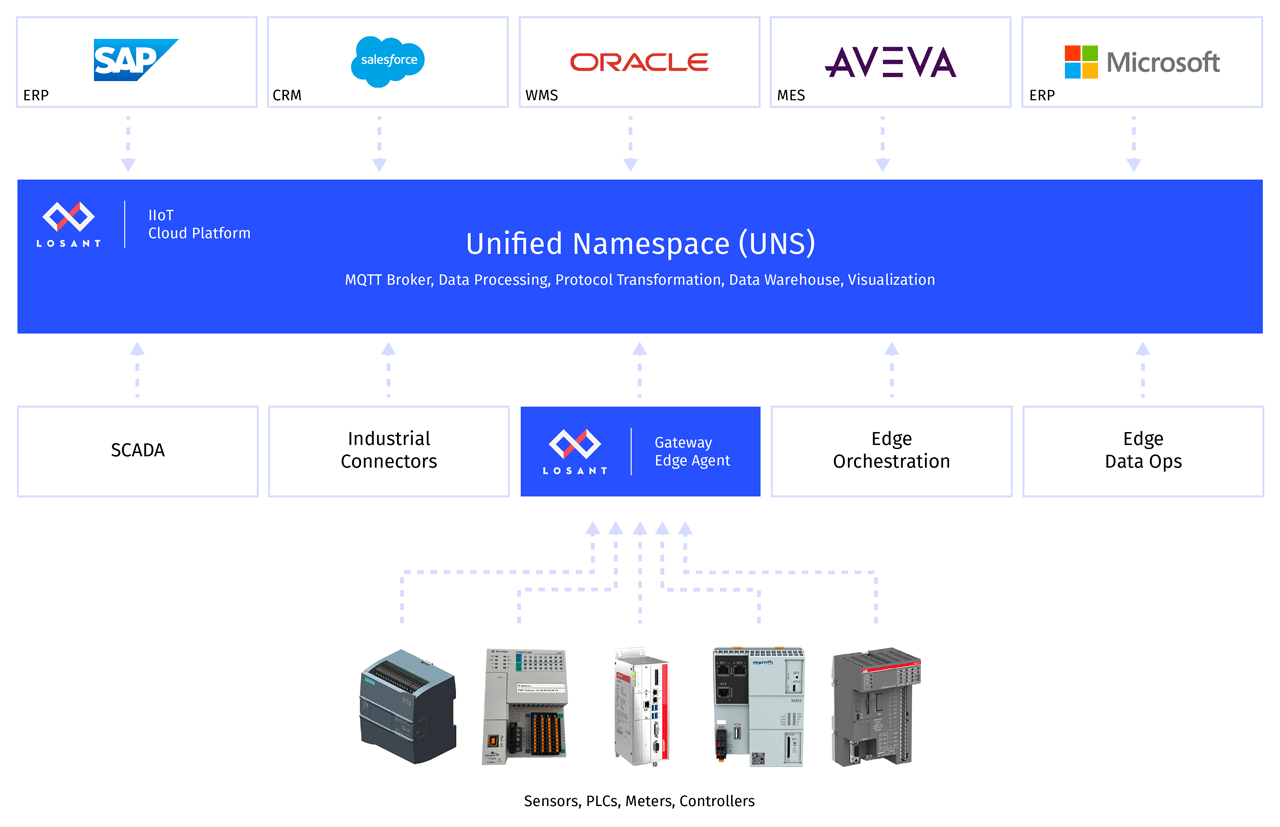
MQTT Broker
An MQTT broker is a required component for any UNS. Losant’s MQTT broker is fully managed, highly scalable and highly available. With support for custom topics, users can adhere to the ISA-95 topic standard or develop schemas that best fit their organizational requirements. Losant also incorporates additional security layers not found in off-the-shelf or open-source brokers, which facilitates tight control over how the various UNS systems can interact with the broker.
Losant significantly simplifies an MQTT broker's initial setup and ongoing maintenance, eliminating the complexities and ensuring it remains scalable and accessible without extensive effort from your team.
Edge Data Operations
Losant provides comprehensive edge and cloud workflow capabilities, enabling the integration of various devices, systems, and applications into your UNS solution.
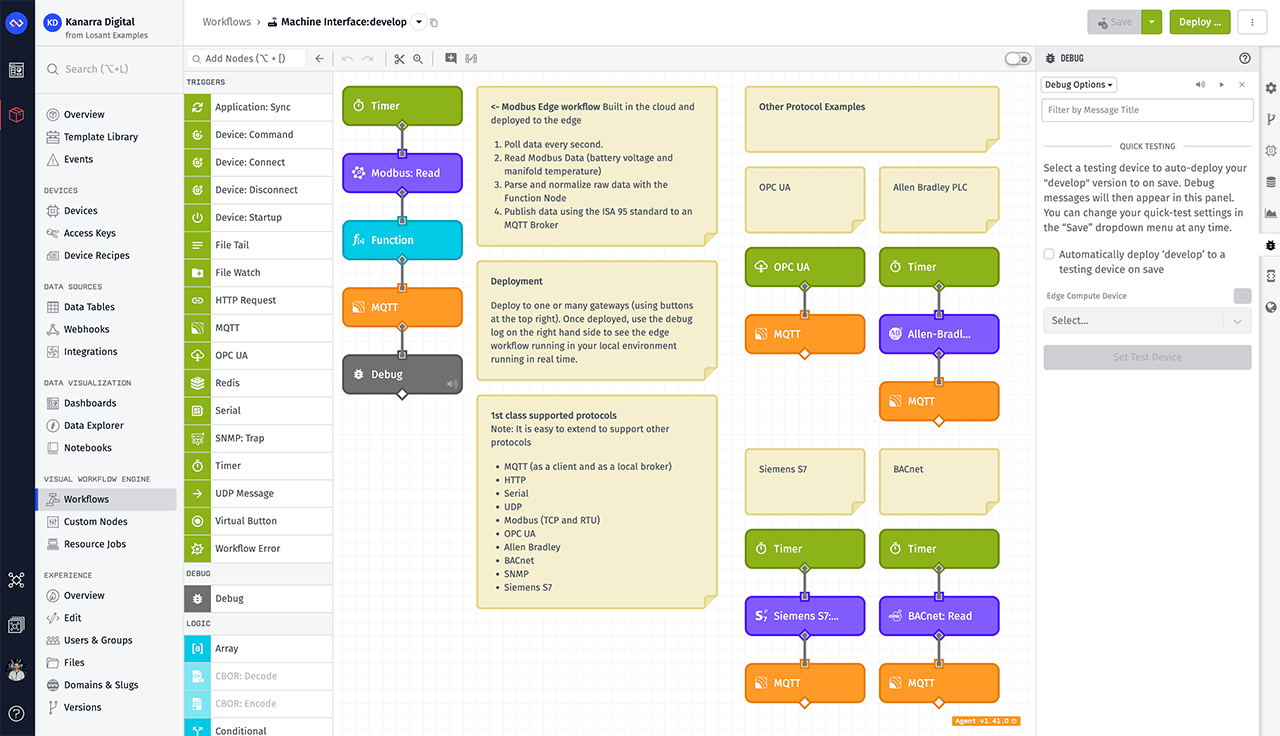
With an emphasis on executing data operations as close to the source as possible for a UNS implementation, edge computing is particularly pivotal. Through Losant's Gateway Edge Agent—compatible with any gateway or VM that supports Docker—you can design edge workflows in the cloud and then deploy them across any number of fielded gateways. Once a workflow is deployed, you can remotely monitor, make updates, and instantly deploy changes.
Edge workflows offer a user-friendly, low-code interface that supports:
- Seamless connection to devices via an array of protocols, including OPC UA, Modbus, Allen-Bradley, Siemens S7, SNMP, and more, ensuring broad compatibility with industrial equipment.
- Data transformation capabilities, allowing for scaling, expression evaluation, and parsing alongside a Function Node for custom JavaScript scripting, catering to diverse data handling requirements.
- Integration with major cloud vendors through dedicated nodes for AWS, GCP, and Azure, or using an HTTP Node to connect to any API, providing flexibility.
- Store-and-forward functionality, ensuring data integrity by buffering it during connection losses and securely transmitting it once connectivity is restored.
- The ability to publish data across custom topics either to the Losant MQTT broker or other MQTT brokers.
Losant’s edge offering streamlines the development and management of edge-based applications, offering a robust toolkit for organizations looking to effectively leverage the power of a Unified Namespace.
Digital Twins and a Time-Series Database
While not required for a Unified Namespace, the Losant platform includes digital twins and a fully-managed time-series database, offering a more comprehensive data management solution.
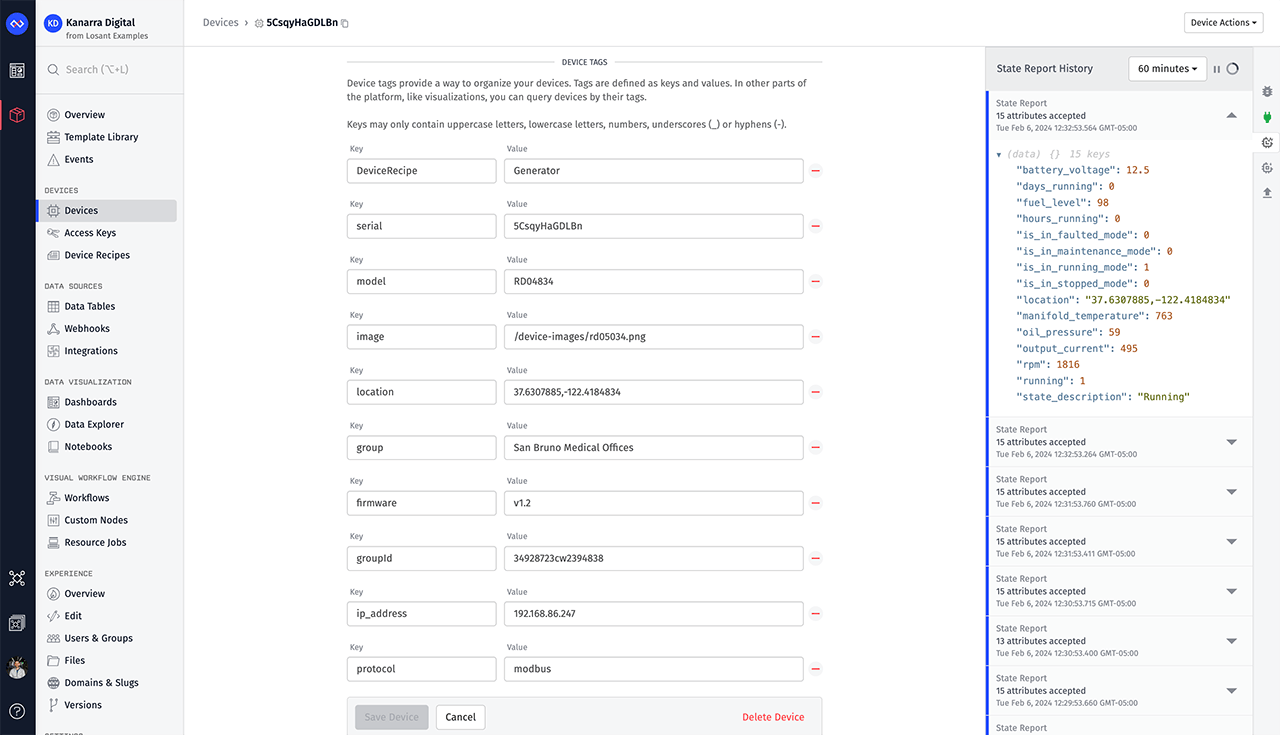
Digital twins within Losant can be tailored to represent anything from individual sensors, entire machines, virtual devices, or systems that embody sites or entire enterprises.
Losant's time-series database allows for the efficient capture and storage of data published by your devices, ensuring that information is readily accessible. Managed by the Losant platform, this database, alongside the MQTT broker, removes the burden of setup, tuning, and ongoing maintenance. This guarantees that you can focus on leveraging your data without system administration overhead.
Losant's platform streamlines device and sensor monitoring, enabling cloud-based device configuration that synchronizes seamlessly with Losant’s edge agents. This functionality includes defining data collection parameters such as tags or registers, polling intervals, and data transformation rules at the edge.
Dashboards and Data Visualization
Losant’s Dashboards provide a drag-and-drop interface to create real-time and historical data visualizations. Dashboards can be utilized for internal purposes or seamlessly integrated into customer-facing applications.
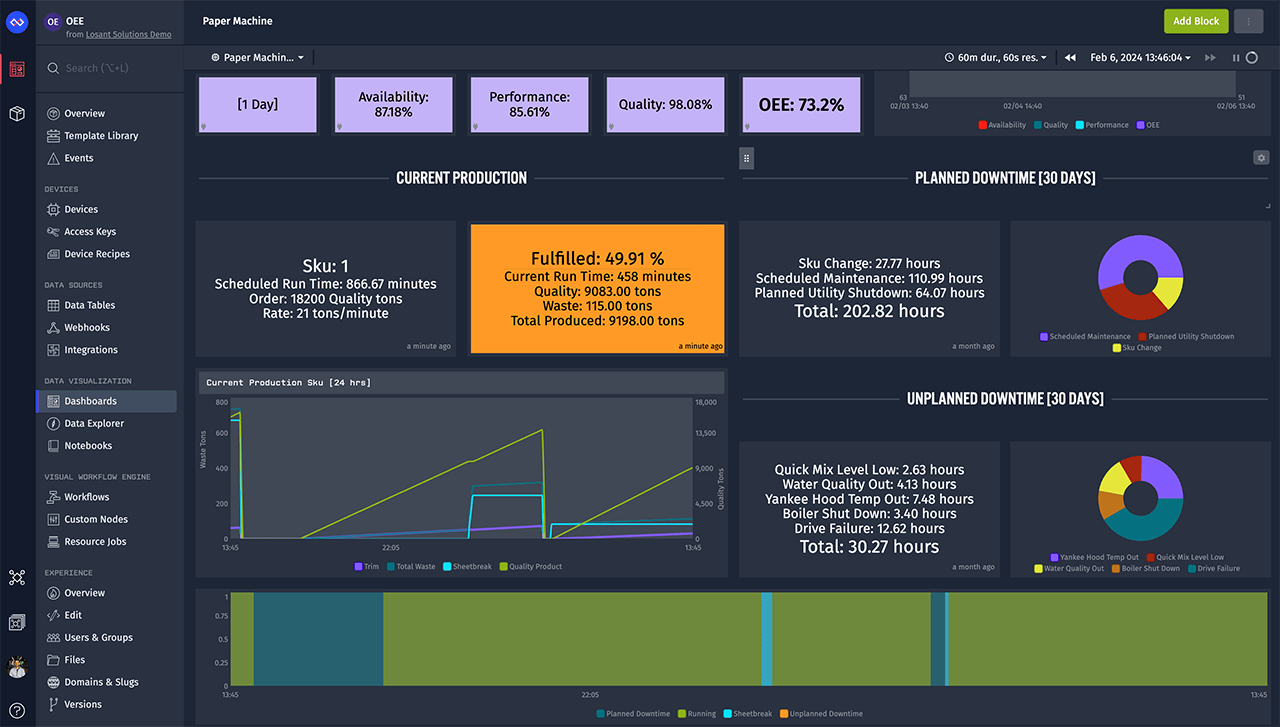
IoT Applications and End-User Experiences
A UNS significantly enhances the ability to access real-time and properly formatted data. This serves as a solid foundation for developing IoT applications. With Losant’s End-User Experiences, creating and deploying web applications tailored to internal employees or external customers becomes seamless.
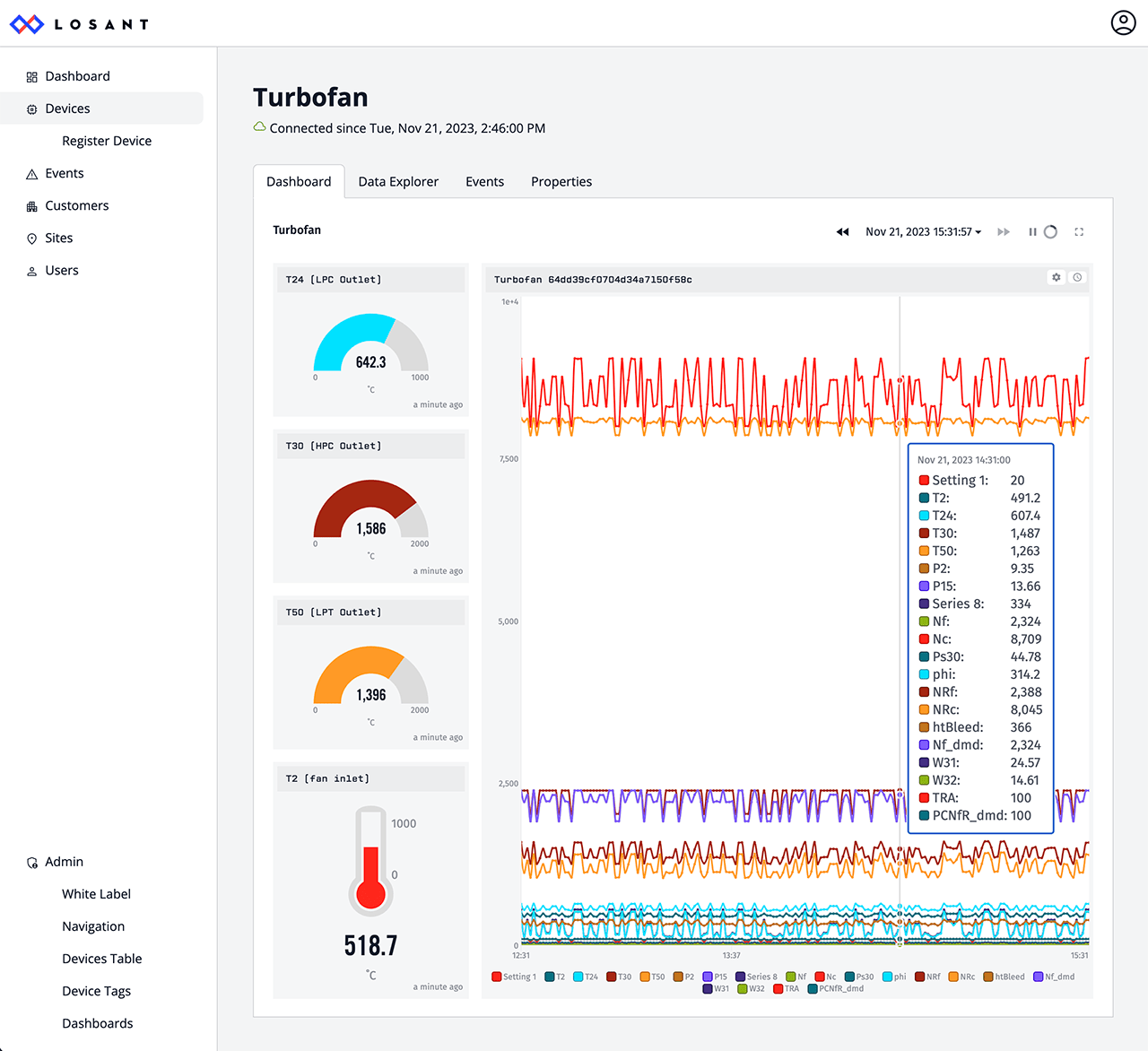
Losant’s End-User Experiences support multi-tenancy, white-labeling, and comprehensive access controls. This enables a wide variety of use cases, including Overall Equipment Effectiveness (OEE), downtime tracking, remote monitoring, condition-based maintenance, inventory management, asset tracking, and many more.
Batch Analytics
Losant Notebooks provide the direct integration of Jupyter Notebooks into the Losant platform. Jupyter is an industry-standard tool for data science, enabling large-scale batch analytics directly within the Losant platform.
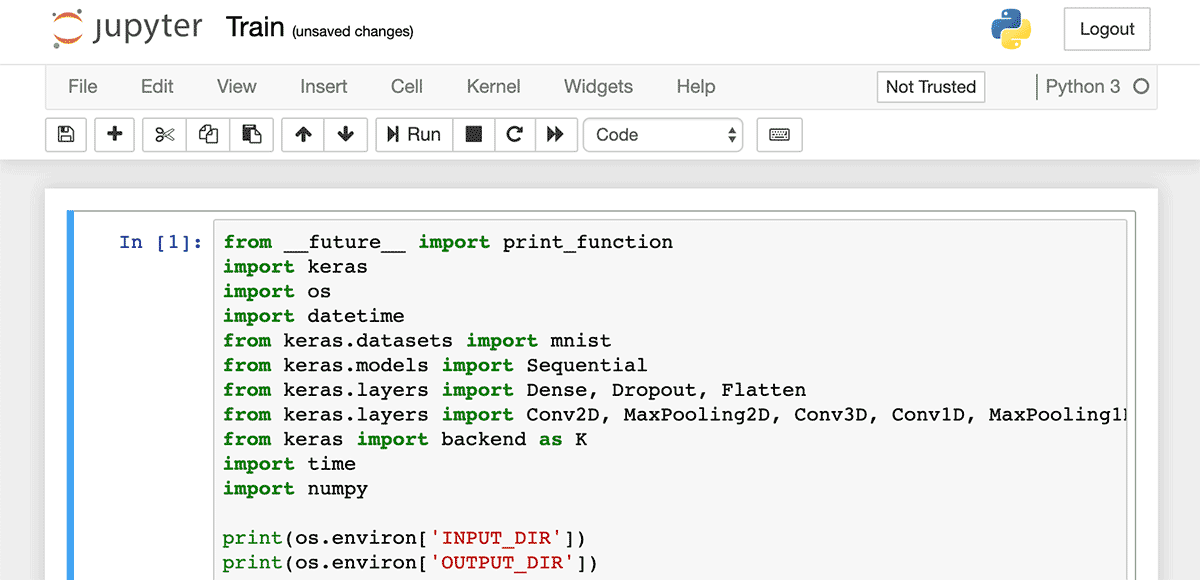
Notebooks significantly enhance the analytical capabilities of your UNS, providing a powerful data analysis and visualization tool to drive insights, inform decision-making, and enrich user interactions with dynamic, data-driven content.
Learn How Losant Can Power Your Unified Namespace
Losant simplifies the implementation of a UNS and amplifies its potential through a scalable MQTT broker, advanced edge computing capabilities, and comprehensive data management tools. Whether it's through creating digital twins, leveraging Jupyter Notebooks for insightful analytics, or building dynamic dashboards for real-time data visualization, Losant stands out as an excellent platform for organizations aiming to harness the full power of their data.
Embracing Losant's platform paves the way for enhanced operational efficiency, deeper insights, and the realization of true digital transformation. The potential of a Unified Namespace powered by Losant is not just a concept but a tangible reality for businesses ready to step into the future of industrial IoT and beyond.
Please contact us to learn more about how Losant can power the future of your UNS.
